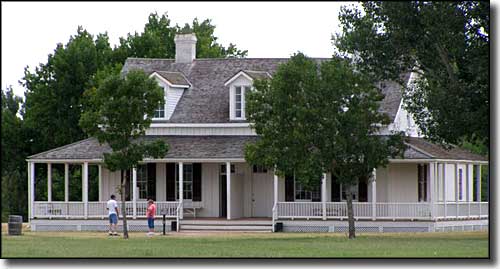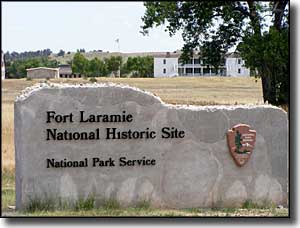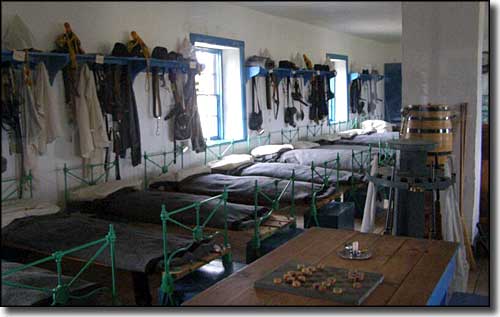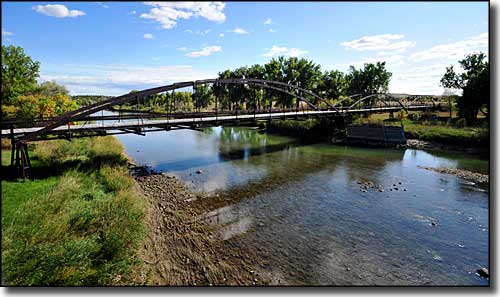
Fort Laramie National Historic Site

The Commanding Officer's Home at Fort Laramie

Fort Laramie actually started out in the days of the fur trade as a fort and trading post built by the American Fur Company. Originally it was known as "Fort John," after John B. Sarpy, a partner in the fur company. Later, the location near the confluence of the Laramie River and the North Platte made it a convenient stopover and resupply point for travelers on the Oregon, California and Mormon Trails.
The US Army took over the fort in 1849 to protect emigrants as they traveled along the big trails. A Treaty of Fort Laramie was signed with many of the local Indian tribes in 1851 that resulted in relatively peaceful relations during the 1850's, but as traffic on the trails increased during the Civil War years, the troops stationed at Fort Laramie adopted an increasingly military posture. Eventually, this led to what is known as "Red Cloud's War," which ended with the 2nd Fort Laramie Treaty in which the United States Government agreed to withdraw completely from Lakota country: the Black Hills of western South Dakota and the Powder River Country of northeastern Wyoming and southeastern Montana. (This treaty, of course, was violated by George Armstrong Custer in 1874 when he reconnoitered the Black Hills looking for gold. That, in turn, led to Custer's Last Stand at the Battle of Little Bighorn in Montana.)
With the completion of the Transcontinental Railroad in 1869, Fort Laramie's importance declined quickly until it was finally decommissioned in 1903.

The cavalry quarters at Fort Laramie

The Iron Bridge across the North Platte River at Fort Laramie, built in 1875.

Fort Laramie National Historic Site area map
